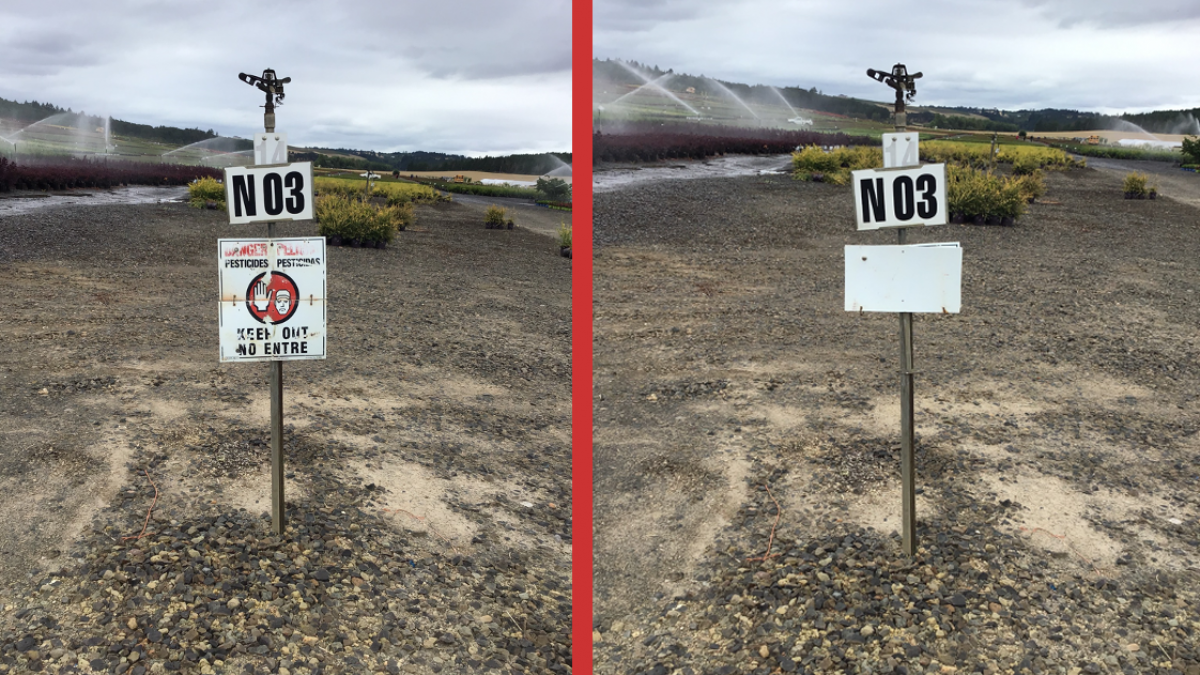
Photo by: Kit Galvin
 Take note
Take note
Metal posted warning sign is cut in half and attached with a wire. The foldable REI is fastened to a metal stake.
 Supplies
Supplies
- Stake
- Metal Do Not Enter Sign
- Metal cutter
- Wire
- Drill bit
 Setup & use
Setup & use
- Use a metal cutter to cut the Do Not Enter Sign in half.
- Use a drill bit to cut two holes in each half.
- Thread the wire throughout the holes to connect both halves of the Do Not Enter Sign.
- Attach the Do Not Enter Sign onto the stakes
 Tips
Tips
Foldable REI signs can remain permanently at the four corners of the fields.
 Alert
Alert
Unfold the posted warning signs at the start of restricted-entry interval and remember to fold over the signs when the REI period ends.
Resources
Pesticide Educational Resources Collaborative: Posting Warning Signs
Worker Protection Standard Rules for Warning Signs
Federal
- example: 40 CFR 170.405. Entry restrictions associated with pesticide applications
Washington State
- WAC 16-223-116. Worker entry restrictions after pesticide applications
We hope that you will be inspired you to incorporate solutions into your own training style, develop your own hands-on teaching tools, or discover new practical solutions. We hope that you are inspired to use these solutions in your workplace. Did you try one of the practical solutions or develop a new one? We would appreciate hearing about your ideas and experiences.
Thank you and safe pesticide handling,
PNASH
Contact your state agency for more information on WPS regulations. The content of this website is for informational purposes only. It may need modification to fit your needs or it may not be appropriate for your workplace. Safe use of these solutions is your responsibility. The University of Washington and the Pacific Northwest Agricultural Safety & Health Center is not responsible for any loss or damage resulting from the use of the information provided on this website.
PNASH Project 2016-2021 (CDC/NIOSH Cooperative Agreement # U54 OH007544)
Contact us
Project Email:
PractSol@uw.edu
Project staff:
Maria Tchong-French (habla español)
206 685-6728
